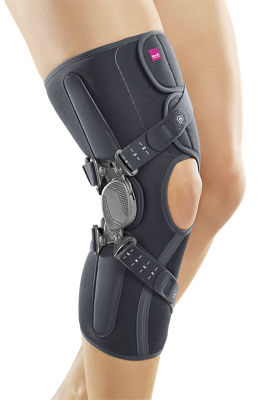Knee braces
To provide a wide range of movement the knee is intrinsically unstable. The condyles of the femur and the tibial plateau are held in place with a combination of constraining bony anatomy and ligaments. Strong musculature tethered to the bones by tendons helps contribute to the overall support mechanism.
The flexion and extension movements of the knee are complex with a combination of rolling, sliding, internal and external rotations all controlled by numerous important bony, ligamentous and muscular structures. Because the knees support the entire weight of our bodies via this complex process the knees are very susceptible to injuries. Add to this mix a faltered step, external slip or unexpected sporting opponent and injury is only moments away.
Wearing the correct knee brace is important while recovering from a painful ligamentous injury, meniscus lesion, instability of the knee joint or patellar dislocation. This helps protect the existing uninjured structures and ensures that the knee gets the proper support as the damaged structures repair. Knee braces can facilitate stability by preventing posterior and anterior translation, medial and lateral sliding; and internal / external rotations. In case of posterior capsule injury they can help prevent further hyperextension. In MCL and LCL injury the patented medi physioglide hinge supports the knee and mimics the natural roll and glide of the knee making the brace comfortable to wear. This helps with compliance which in turn helps with accelerated rehabilitation.















